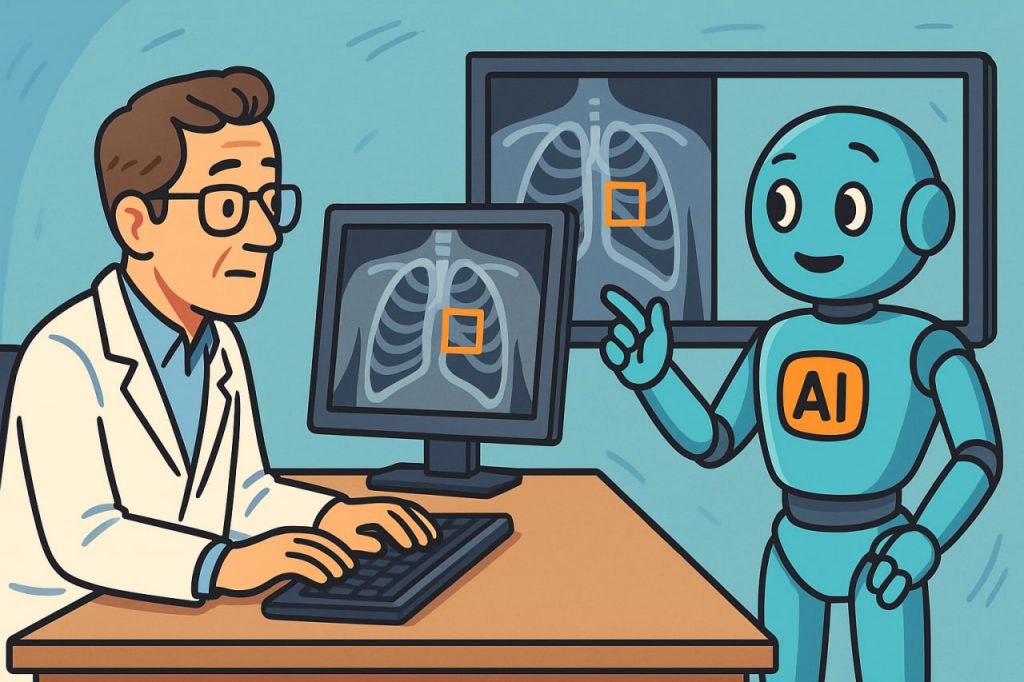Radiology, the field of medicine focused on imaging technologies such as X-rays, CT scans, and MRIs, is experiencing a major shift thanks to artificial intelligence (AI). AI tools, especially those using deep learning, can now analyze medical images with remarkable speed and accuracy. This has sparked debate among professionals and the public alike: will AI replace radiologists, or simply help them do their job better?
Modern AI algorithms can detect subtle patterns in images that might be missed by the human eye, such as early signs of cancer, microfractures, or abnormal tissue growth. These systems can process thousands of images rapidly, offering a significant boost in diagnostic efficiency and consistency, especially in settings where radiologists are overwhelmed or unavailable.
Tasks AI Can Handle in Radiology
AI is currently most effective in repetitive and well-defined tasks. For instance, it can:
- Flag suspicious lesions in mammograms
- Measure tumor size over time
- Detect brain bleeds on CT scans
- Highlight bone fractures or lung nodules
AI tools are particularly useful in screening programs where vast numbers of images must be reviewed quickly. They can help prioritize urgent cases, reduce diagnostic errors, and improve workflow efficiency. However, they are not autonomous decision-makers — at least not yet.
The Radiologist’s Role in the Age of AI
While AI excels at pattern recognition, it lacks the broader clinical understanding of a human expert. Radiologists do more than interpret images — they integrate medical history, lab results, and clinical context to arrive at comprehensive diagnoses. They also communicate findings with other physicians and patients, make judgment calls in complex or ambiguous cases, and adapt to unusual scenarios.
Rather than replacing radiologists, AI is becoming a powerful assistant — one that enhances accuracy and reduces fatigue. Many professionals now view AI as a “second reader,” providing a safety net that helps prevent oversights.
Challenges and Ethical Considerations
Integrating AI into clinical practice raises important questions. How reliable are AI systems in real-world settings? Who is responsible if the AI makes an error? Is patient data safe? These concerns have led to calls for rigorous regulation, transparent validation, and human oversight in all AI-supported decisions.
Additionally, AI tools trained on biased or incomplete data may underperform in diverse populations. Ensuring fairness, transparency, and accountability is key to building trust in AI-assisted healthcare.
The Future: A Collaborative Model
Rather than seeing AI as a threat, many experts advocate for a collaborative model in radiology. In this model, AI handles routine image analysis and triage, while radiologists focus on complex interpretations, decision-making, and patient interaction. This hybrid approach offers the best of both worlds: the speed and consistency of machines, combined with the insight and adaptability of humans.
Medical schools and radiology departments are now training future professionals to work alongside AI — not in competition, but in collaboration.
Glossary
- Artificial Intelligence (AI) – Computer systems capable of performing tasks that typically require human intelligence, such as pattern recognition and decision-making.
- Deep learning – A branch of machine learning where neural networks learn from vast amounts of data to make predictions or classifications.
- Radiologist – A medical doctor specialized in interpreting medical images.
- CT scan (Computed Tomography) – A type of X-ray imaging that creates detailed cross-sectional pictures of the body.
- Screening program – A health initiative to detect diseases in people without symptoms, often using imaging tools.


